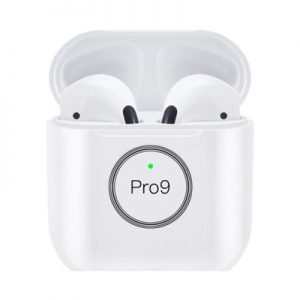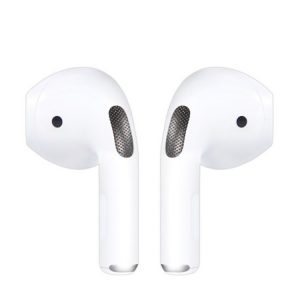Bluetooth headsets are the second largest application of Bluetooth. According to the official market report of IMS, the total global shipment of Bluetooth headsets in 2007 was 67 million, and it is expected to be 81 million in 2008. In the Chinese market, Bluetooth headsets are also the second largest Bluetooth device in shipments. In addition, China is also a major manufacturing center for global Bluetooth headsets. It is estimated that more than 60% of the world’s Bluetooth headsets are designed or produced by Chinese ODM/OEM, including most top brand Bluetooth headsets such as Nokia, Motorola and Samsung.
However, for the current global annual output of more than 1 billion mobile phones, 80 million Bluetooth headsets are still very weak, especially today when Bluetooth has become the standard for mobile phones. In other words, more than 90% of users who have Bluetooth mobile phones do not use the Bluetooth function.
“This situation will slowly change. As countries have stricter and stricter restrictions on the use of mobile phones by drivers, and the functions of Bluetooth headsets become more and more abundant, the prospects for the Bluetooth headset market are very broad. However, the current obstacles to Bluetooth There are four main technical reasons for the development of headphones, especially stereo headphones.” said Wu Songru, CSR China Manager.
Then, he further explained as follows: First, the current price of stereo Bluetooth headsets is still expensive. Specifically, the current price of stereo Bluetooth headsets is more than twice that of mono headsets, and some professional stereo headsets are more expensive;
Second, the current high power consumption of stereo headsets leads to poor applicability. For example, the mainstream stereo headsets currently on the market can only play for 1 to 2 hours, but the current mobile phones can play MP3/MP4 for more than 5 hours, so headsets have a shorter playback time than mobile phones;
Third, there are currently few stereo headset solutions, and there are not many ODMs that can design good stereo headsets. Most ODMs focus on mono headsets;
Finally, due to the problem of decoding conversion, the audio playback quality of stereo headsets is still inferior to wired headsets.
“Because of the above four reasons, there are still very few users of stereo headsets.” Wu Songru said, “Therefore, CSR has made improvements to these issues and launched the latest stereo headset solution-BlueTunes ROM, which is on the BC5 Multimedia chip. Achieved the best headphone solution.”
Specifically, BlueTunes ROM has achieved the following improvements: First, the Flash circuit required by the original headset is changed to a ROM circuit, which provides users with a method that can be used directly. CSR will most of the previous needs to be developed by customers. All things are placed in the ROM, so that customers can quickly launch products. At the same time, due to the use of ROM instead of Flash, the cost has been reduced a lot. The second improvement is the direct integration of MP3 decoding and SBC decoding in the BlueTunes ROM, so that the headset can be directly played in MP3 format, which has higher sound quality than the current SBC format, and the signal-to-noise ratio can reach 95dB; at the same time, it does not need to be in the mobile phone. And headphone end transcoding, so that the power consumption at both ends are greatly reduced. The third is the use of CSR’s unique FastStream technology, which shortens the delay of Bluetooth transmission. “If this technology is not adopted, the delay can reach 200ms. After adopting it, the delay can be reduced to 28~34ms. Therefore, it can solve the problem of asynchronization of audio and video in the current headset.” Fourth, BC5 DSP is integrated in Multimedia, which can eliminate CVC echo and noise. “Many users report that Bluetooth headsets can’t eliminate the surrounding noise very well when making a call. Our new solution can solve this problem.” Wu Songru said. The single microphone can achieve 10dB noise suppression; the optional dual microphone preset can achieve 30dB suppression. Finally, BC5 Multimedia is a highly integrated solution with built-in DSP and RISC processors, stereo decoding, battery charging management, Bluetooth radio frequency, and ROM. Customers only need to plug a crystal oscillator to complete the design of stereo headsets, so the cost can also be greatly reduced. .
“Using this new solution, the cost of stereo headsets can be reduced by more than 50%.” Wu Songru said, “Moreover, a 180 mAh battery can achieve up to 10 hours of music playback. If you run CVC software to make calls, you can achieve 12-16 hours of talk time.”
According to Wu Songru, CSR currently accounts for more than 80% of global headset chip shipments. As of April this year, CSR’s shipments in the headset market have reached 150 million pieces. “Our headset solution has IOT testing with mainstream mobile phones, and there is no problem with compatibility.” He said.
In fact, because MTK makes Bluetooth a standard configuration of its mobile phone platform, the future market growth of independent Bluetooth chip manufacturers will come from markets other than mobile phones, and headsets will be their biggest opportunity. Therefore, in addition to CSR, other Bluetooth chip manufacturers are also very concerned about the market, such as Accel Semiconductor. The company’s marketing director Shen Zhiqiang said that they will soon launch a stereo Bluetooth headset solution. “In addition to mobile phone Bluetooth headsets and MP3/MP4 Bluetooth headsets, Bluetooth stereo audio applications, Bluetooth hands-free devices, Bluetooth video applications and medical applications are all very good market opportunities in the near future.”








